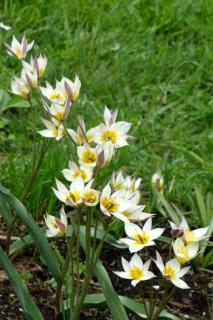

Botanical tulip blooms very early, hugs the ground instead of growing tall, and bears magnificent flowers.
Botanical tulip is a family of flowers that is closest to what can be found in nature. Stems are short and flowers open even as they’re emerging from the bulb. At the very beginning of spring, their bright colors definitely catch the eye. Many varieties have a stripe along their leaves, which makes them even more remarkable. More importantly, this type of “wild tulip” resists storms and bad weather without batting an eye.

Most varieties of botanical tulips can propagate completely naturally, such as the Greigii, Turkestanica, Sylvestris, Batalinii and Pulchella. You won’t need to dig them out every year. If you do prefer to remove them, wait for leaves to have turned brown in June.
Botanical tulips love sun. Plant the tulips in October/November with the pointy tip facing upwards, and cover them with 3 to 4 inches of soil (7 to 8 cm). Compared to cultured tulips, botanical tulips are often cheaper. Usually 4 or 5 dollars or euros for 10 bulbs.
There are too many to name them all! A quick overview:
 Tulipa kaufmanniana ‘Berlioz’, a very special mini-tulip
Tulipa kaufmanniana ‘Berlioz’, a very special mini-tulip